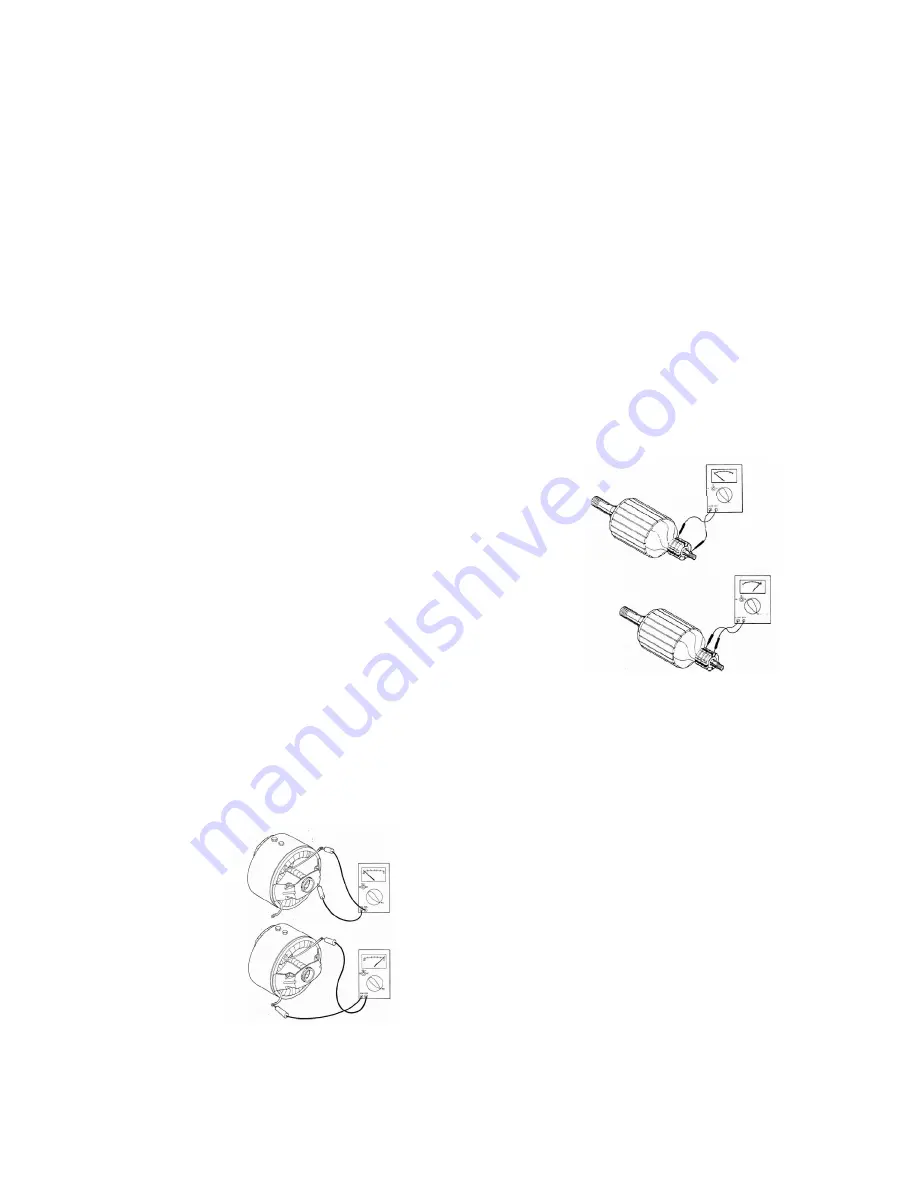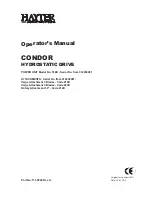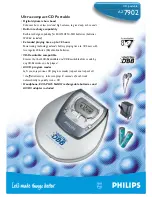
6
REV B
OPM-101
ELECTRICAL TESTING
TESTING COILS FOR OPENS AND GROUNDS
1. Disconnect field leads from rectifier
2. Set multi-meter to read infinite resistance (very high ohms), repair or
replace field if it is open. Typical resistance for these fields varies from
12.8 to 14.1 ohms.
3. Leaving one meter lead connected to the field, connect the other
meter lead to the field shell. If meter indicates continuity (any reading
- should be infinite resistance), the field is grounded and should be
repaired or replaced. To determine which of the fields is grounded, cut
the connector between the two coils and retest to determine which coil
has the low resistance path.
TESTING ARMATURE FOR OPENS AND GROUNDS
1. Remove all brushes
2. Ground fault test. Set multi-meter to read high resistance (mega-
ohms). Holding one meter lead against a clean spot on the armature
shaft, touch the other lead to each of the slip rings (one at a time) while
observing the meter. If the meter indicates continuity (any reading lower
than one mega ohm), the armature is grounded. Dirt between the slip
rings and on the insulator surface can cause grounding. If grounding
was indicated, carefully clean all dirt off the slip rings and their
insulators and then recheck it. Replace the armature if it is grounded
and unrepairable.
3. Testing for opens. Set meter to read low resistance (Rx 1 ohms).
Holding one meter lead on the surface of slip ring #1, touch the other
lead to surface of slip ring #2 while observing the meter. Meter should
indicate continuity (low resistance 0 less than one ohm is typical). If the
meter indicates an open circuit (infinite resistance) part of the armature
winding is open. This may be caused by a repairable defect in the
connection at the slip ring, however, generally an open armature will
have to be replaced.
TESTING RECTIFIERS
The field excitation is supplied through full wave bridge rectifier. This
type of rectifier has four terminals: two AC and a DC positive (+) and
DC negative (-). Nothing is connected to the DC negative (-) in this
generator.
A rectifier may be tested in the following manner:
1. Disconnect all leads from rectifier.
2. Connect the red ohmmeter lead to the positive DC (+) terminal.
3. Connect the black lead to each of the AC terminals in turn. Either a
high or low resistance reading will be obtained.
4. Reverse the meter lead, (black to the DC positive (+) and red to the
AC terminals, each in turn. An opposite reading should be observed.
5. Check each terminal to the case. An open circuit (very high
resistance) reading should be observed. If a battery powered test light
is used, follow the same procedures and previously described. A good
diode element will allow current to pass to the light in the test lamp
when the leads are connected in the forward direction.
6. If the rectifier fails any of the afore mentioned tests, it should be
considered defective and replaced.
thereafter. Remove brushes one at a time and check for length. Be
sure that each move freely in the brush holder. Brushes should be
replaced when worn down to 3/8”. Always replace brushes in complete
sets, never singularly. When replacing brushes, be careful to connect
the lead wire properly. Poor contact or “skipping” between brush
and slip ring can cause oil and grit, flint, or other hard contaminant
substances on the brushes, or by the brush not being properly shaped
to fit the slip rings.
Remedy these defects by cleaning the rings and brushes and the fitting
the brushes to the slip ring curvature. Place #00 sandpaper under the
brushes with the abrasive side to the brushes, and work it back and
forth until the brushes are the same shape as the slip rings.
SLIP RINGS
The continuous copper rings located at the end of armature are the
power collector rings or ‘slip rings’. For proper generator output, the
Surface of these slip rings must have a highly polished finish. Under
sustained use, it is advisable to check and occasionally polish ring
surfaces with a crocus cloth to maintain the finish under normal
conditions. This should not be required more than once each thousand
hours of operation.


























